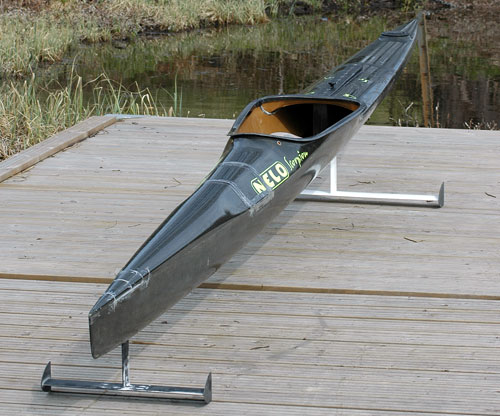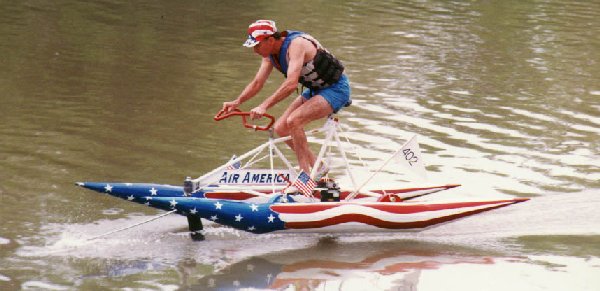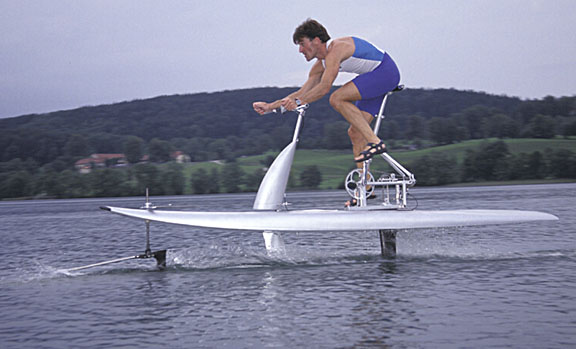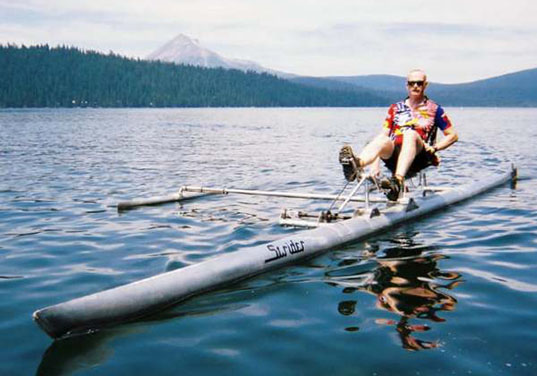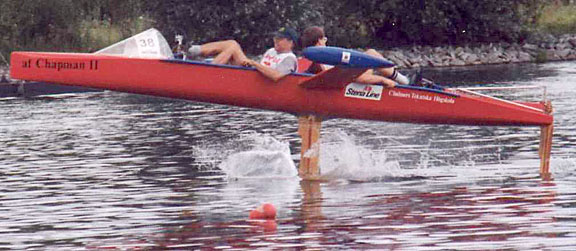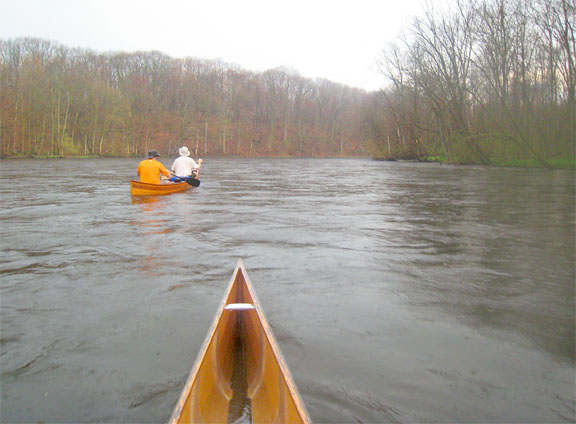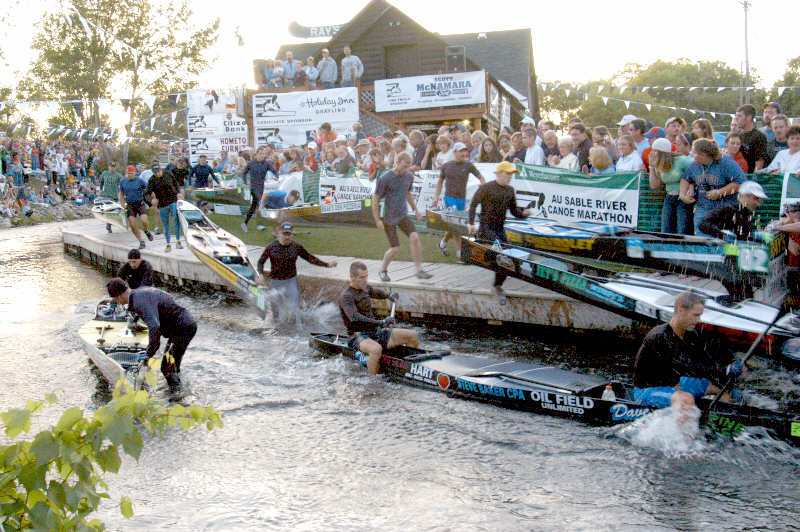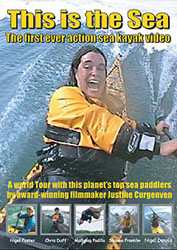If you really want to paddle for awhile with ease, you’d use your legs not your arms. Arms take lots more training to be able to go long distance—and even then they’re still half as strong.
I’ve known about pedal drives for some years but I hadn’t realized how much work had been done recently in the area of pedal boats. I personally like the idea as a supplement to arm paddling. My ideal boat would also let you row. And sail. And use a little motor. But right now we’re talking pedaling. And we’re not talking those little duckie boats for the duck pond. Coz, ya know, a decent pedal boat can cruise along at 5-7mph all day long. And that’s DARN hard to do in a paddle boat. The main thing, to me, is that it lets you rest your upper body. I’m thinking one could readily travel twice the distance for the same aches’n’pains. Or go a given distance with half the stress (‘course one would have to eat the same amount in so doing). But it does look like pedaling is also a good bit faster.
The high end of this sport was launched in the early 90’s by Bob Stuart who came out with his Kawak Drive Unit which became the Spin Fin. He’s a nice guy. Here he is:
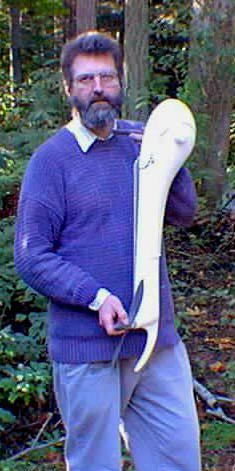
But nowadays it seems like homebuilders are getting drives from a couple other sources.
Now, I have to mention that there’s a whole other level of HP (human power) boats. That’s the hydrofoil turf. Now, foils are also being done for hobby-level small sailboats. But pedalcraft are into them, too. They hold the speed records for short distance HP boating. Pics to follow of some surprising things in this field. But I believe it’s a short distance, high-fitness field and so of less general interest than plain old totally easy pedal-boating.
Pedal-boaters have been known to travel over 100 miles on still water in 24 hours. (Paddlers can only do this on flowing rivers.)
Now, one downside of pedal craft seems to me to be the question of DRAFT. That is, you need deep water, relatively speaking. You couldn’t do it on any of my local rivers, for instance. Thankfully quite a few of the models have liftable drives. I guess they have gaskets to pop in when the drive isn’t being used. Anyway, I imagine plenty is being done here, too—with some shallow-riding or tiltable drives out there or being developed. Quite a few drive set-ups do deal with the challenge of weeds—a drive-unit set up in front of the paddler…peddler…is apparently easier to keep clean. Some folks create de-weeding tools, too.
The biggest player today in this field, by far, has to be the Hobie Mirage. It seems to me to be a fairly strange device—in a field of strange devices! It’s a set of pivoting paddles that one propels like fins with pedal-levers on the boat. It’s not a round-crank system, but a forward-backward lever action. It seems to go OK. I haven’t heard a whole lot more good things said about it. Other than that it’s available. I mean, Hobie makes it. That’s a big win right there.
Dr. Nick “Pelican” Hall did the huge 1200-mile WaterTribe.com Ultimate Challenge around the Florida peninsula using a set-up that’s close to my ideal: he installed a Mirage into a Kruger canoe. He concluded that the drive wasn’t fast but it did let him greatly extend his range and rest his upper body.
OK, here are the big resources online for this subject:
www.recumbents.com/WISIL/hpb/boat2005.htm
www.hydrocycles.com/pedalos.php
microship.com/bobstuart/spinfin.html
www.humanpoweredboats.com/Photos/Individuals/PedalWaa/PedalWaa.htm
www.msu.edu/~pengchun/ — a Michigan source for $300 drive-units!
www.unclejohns.com/boat/peddledrive/default.htm—$700 drive unit
And here are some pics!
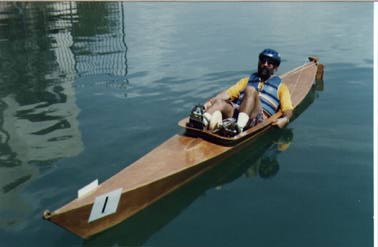
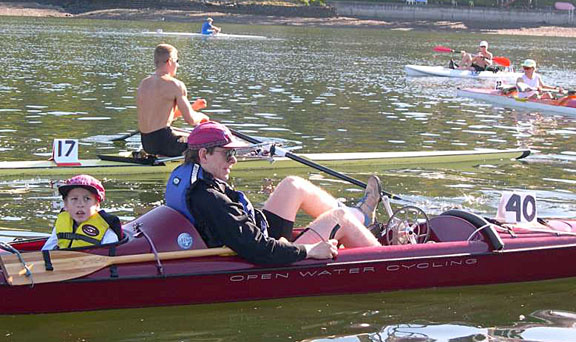
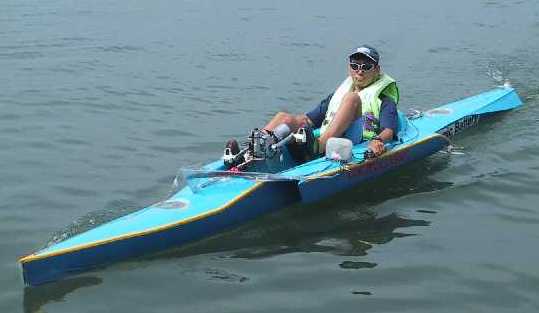
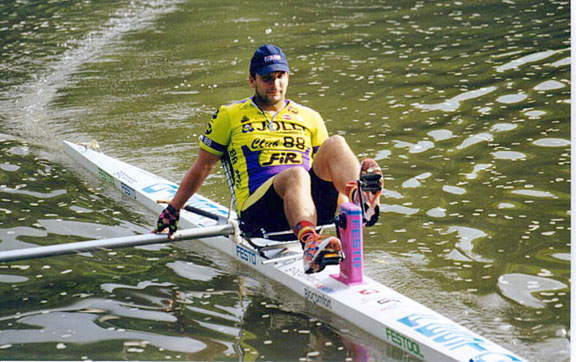
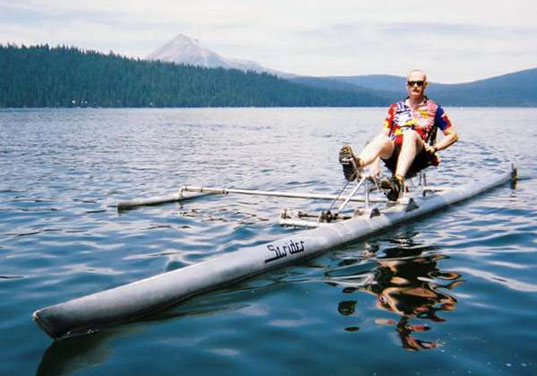
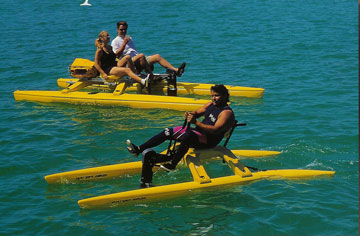

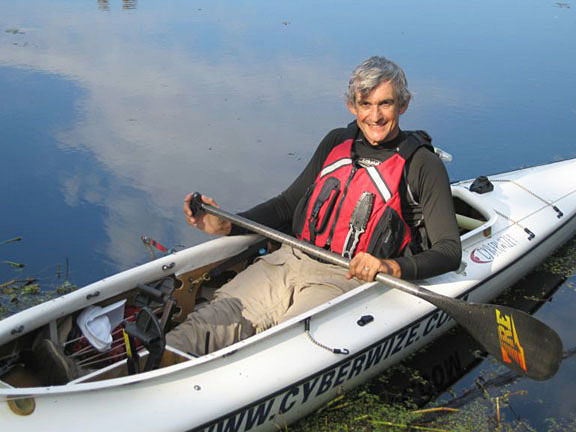
Above, Dr. Nick Hall and his Mirage-equipped Kruger.
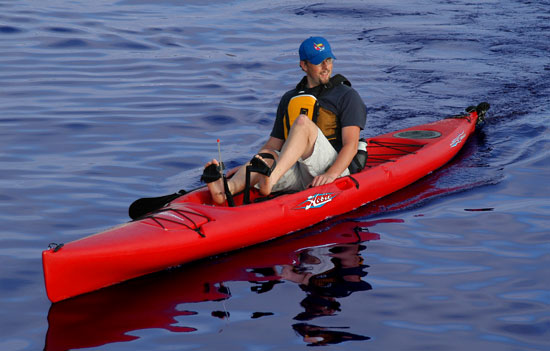
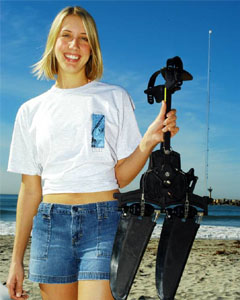
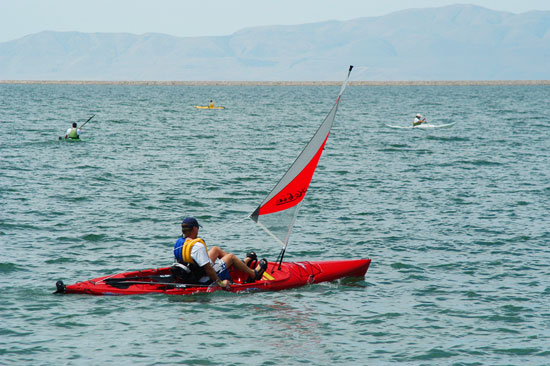
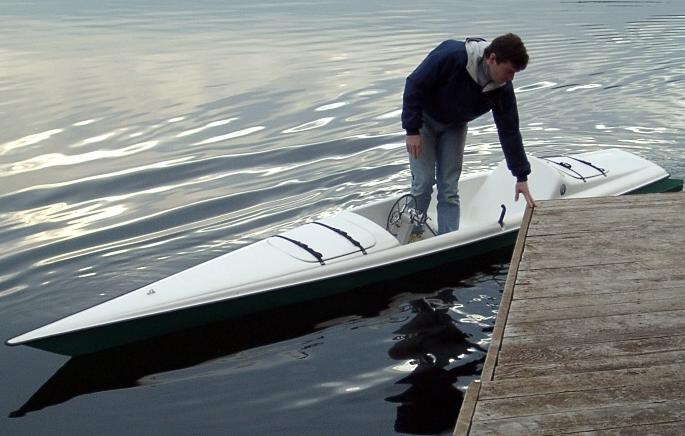
Above, the Open Water “Cadence”—manufactured at present, I think.
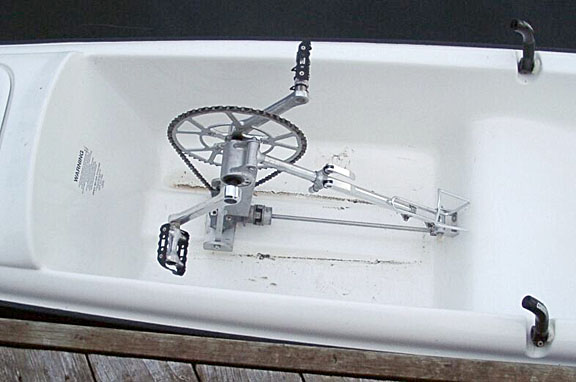
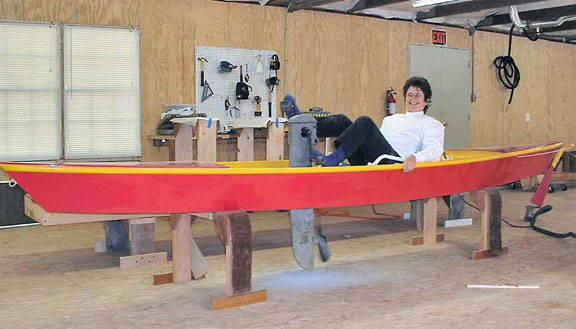
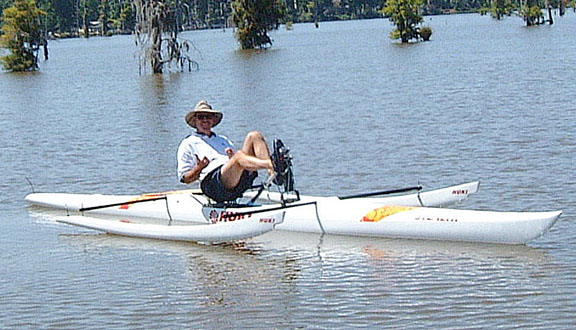
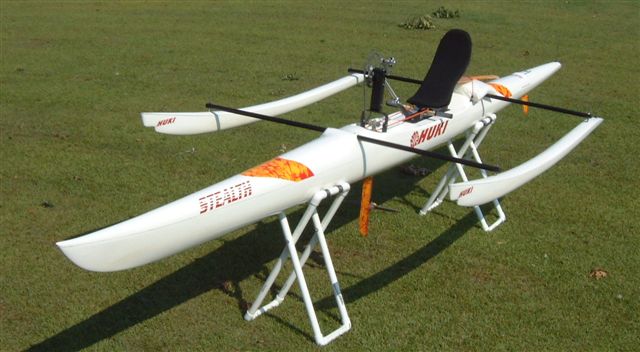
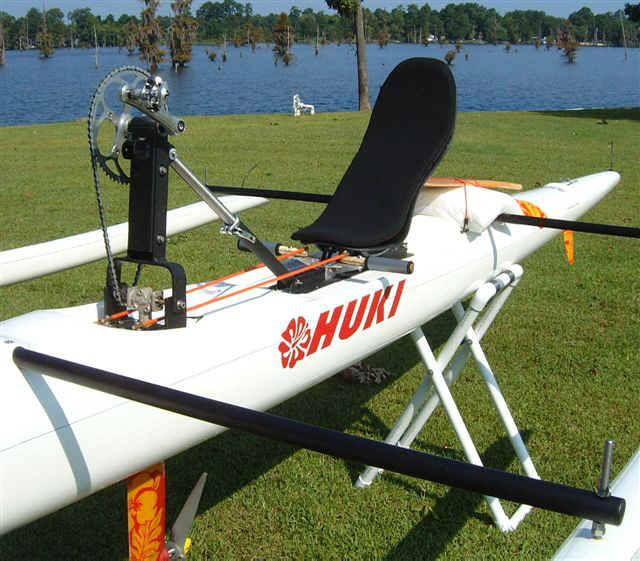
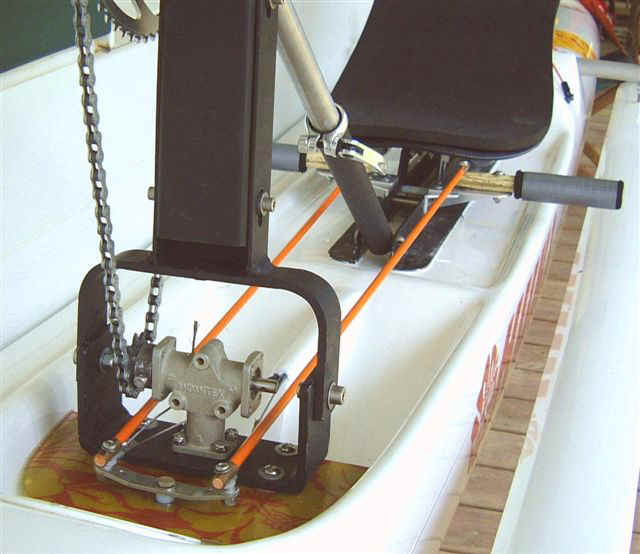
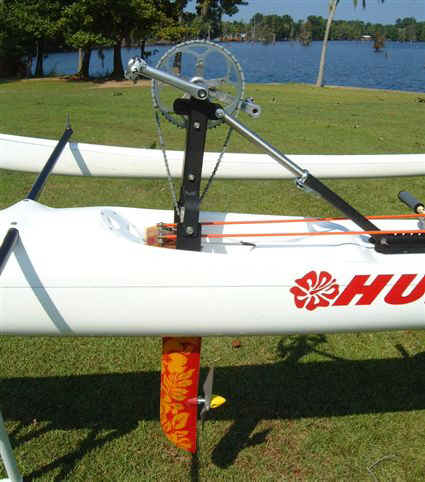

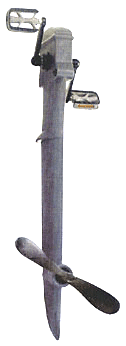

Above, the Chinese drive-unit available from a Michigan dealer.
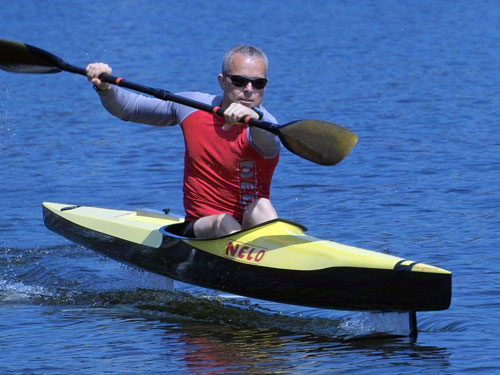
Above, the wild’n’crazy Flyak. Apparently it’s even stable. I gather that a Norwegian non-paddler lady reporter got it up and running. Here an Olympian takes it up to 17mph! That’s about twice as fast as a regular Olympic boat! He raced and tied a 4-man Olympic kayak.
